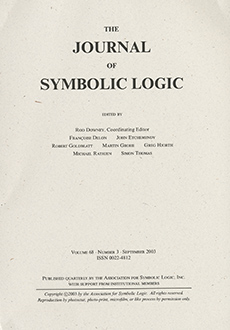Abstract
For integers $l \geq 1$, $d \geq 0$ we study (undirected) graphs with vertices $1, \ldots, n$ such that the vertices can be partitioned into $l$ parts such that every vertex has at most $d$ neighbours in its own part. The set of all such graphs is denoted $\mathbf{P}_n(l,d)$. We prove a labelled first-order limit law, i.e., for every first-order sentence $\varphi$, the proportion of graphs in $\mathbf{P}_n(l,d)$ that satisfy $\varphi$ converges as $n \to \infty$. By combining this result with a result of Hundack, Prömel and Steger [12] we also prove that if $1 \leq s_1 \leq \ldots \leq s_l$ are integers, then $\mathbf{Forb}(\mathcal{K}_{1, s_1, \ldots, s_l})$ has a labelled first-order limit law, where $\mathbf{Forb}(\mathcal{K}_{1, s_1, \ldots, s_l})$ denotes the set of all graphs with vertices $1, \ldots, n$, for some $n$, in which there is no subgraph isomorphic to the complete $(l+1)$-partite graph with parts of sizes $1, s_1, \ldots, s_l$. In the course of doing this we also prove that there exists a first-order formula $\xi$, depending only on $l$ and $d$, such that the proportion of $\mathcal{G} \in \mathbf{P}_n(l,d)$ with the following property approaches 1 as $n \to \infty$: there is a unique partition of $\{1, \ldots, n\}$ into $l$ parts such that every vertex has at most $d$ neighbours in its own part, and this partition, viewed as an equivalence relation, is defined by $\xi$.
Citation
Vera Koponen. "A limit law of almost $l$-partite graphs." J. Symbolic Logic 78 (3) 911 - 936, September 2013. https://doi.org/10.2178/jsl.7803110
Information





